Are you captivated by the vibrant flora of Vietnam and want to know more than just about the flamboyant trees? SIXT.VN is here to guide you through the diverse and captivating world of Vietnamese flora. This article will highlight other common trees and flowers you’ll encounter in this beautiful country, perfect for planning your Vietnam adventure.
1. What Makes Vietnam’s Flora So Diverse?
Vietnam’s diverse flora is due to its varying climates and geography. The country spans multiple climate zones, from tropical to subtropical, with diverse terrain from coastal plains to high mountains. This creates a wide range of habitats that support many different plant species. According to a study by the Vietnam National Museum of Nature in 2020, Vietnam is considered one of the biodiversity hotspots globally, with an estimated 12,000 plant species. SIXT.VN offers tours that explore these biodiverse regions, ensuring you don’t miss out on the natural beauty of Vietnam.
2. What Flowers And Plants Are Commonly Found In Vietnamese Cities?
Besides the eye-catching flamboyant trees, Vietnamese cities boast a variety of common flowers and plants that add to their charm.
- Bougainvillea (Hoa Giấy): These vibrant, colorful vines are ubiquitous in Vietnamese cities, especially in coastal regions. They come in various shades of pink, purple, and white, adding a splash of color to homes and gardens.
 Bougainvillea, Vietnam
Bougainvillea, Vietnam
- Hibiscus (Chi Râm Bụt): Hibiscus flowers are known for their large, showy blooms and come in different colors such as red, pink, yellow and white. They are commonly found in gardens and parks, especially in the southern regions.
 Hibiscus flower, Vietnam
Hibiscus flower, Vietnam
- Lantana (Ngũ Sắc): This is a pretty little flower that grows on a shrub-like bush, especially by the sea. The flowers are a bouquet of small clusters in many colors: red, yellow, violet, orange, pink.
 Lantana flower, Vietnam
Lantana flower, Vietnam
- Frangipani (Hoa Sứ): These fragrant white flowers with a yellow center are commonly found near temples and resorts. Their sweet, citrusy scent is a delight.
 Frangipani flower, Vietnam
Frangipani flower, Vietnam
- Water Lily (Hoa Súng): These aquatic beauties can be found in ponds and lakes, adding a serene touch to the landscape. They come in various colors like white, pink, and purple.
 Purple water lily, Vietnam
Purple water lily, Vietnam
SIXT.VN can arrange visits to parks and gardens in Hanoi, Ho Chi Minh City, and other urban centers, where you can admire these common flowers and plants.
3. What Trees And Flowers Define The Vietnamese Countryside?
The Vietnamese countryside is adorned with many trees and flowers, each contributing to its unique charm.
- Coconut Palm (Cây Dừa): These iconic palms are synonymous with the tropics and thrive along the southern and central coasts. They provide shade, coconuts for refreshment, and a picturesque landscape.
 Coconut palm tree, Vietnam
Coconut palm tree, Vietnam
- Flame Tree (Phượng Vĩ): Besides being common, these trees stand out with their vibrant red flowers. They’re a sight to behold during their blooming season.
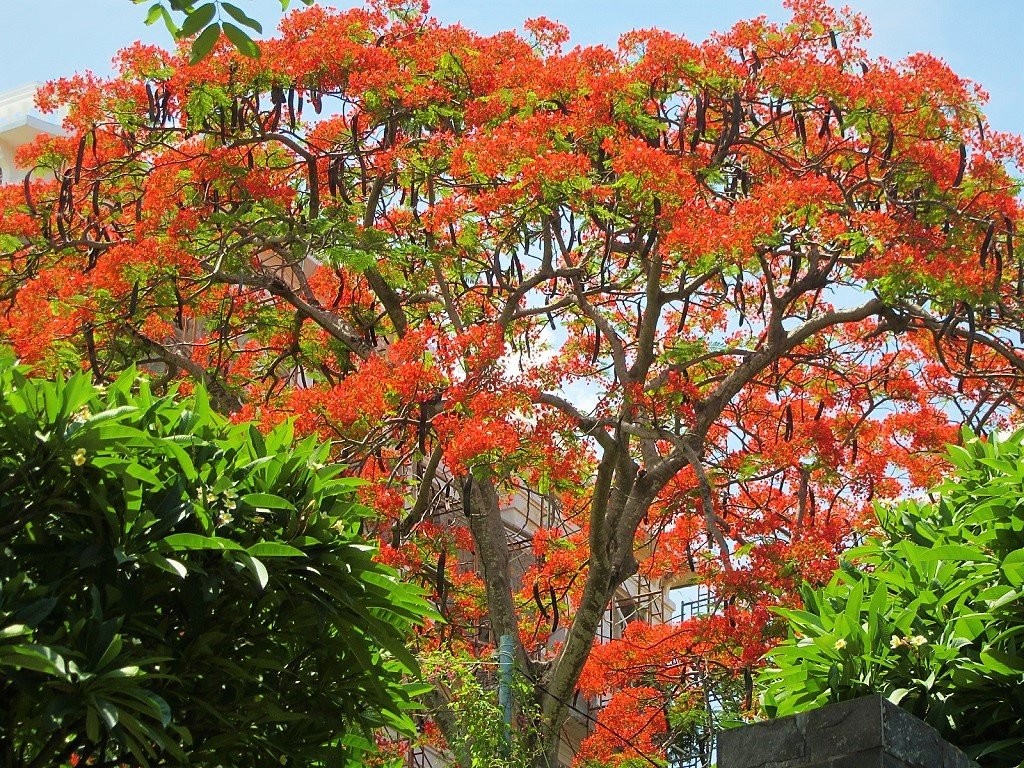 Flame tree, Vietnam
Flame tree, Vietnam
- Golden Shower Tree (Hoa Hoàng Yến): With its cascading yellow flowers, this tree is another beauty in the Vietnamese flora. They bloom in the coastal regions of Vietnam between March and June.
 Golden Shower tree, Vietnam
Golden Shower tree, Vietnam
- Lotus (Hoa Sen): As the national flower of Vietnam, the lotus is a symbol of purity and is often found in ponds and lakes, particularly in the Mekong Delta.
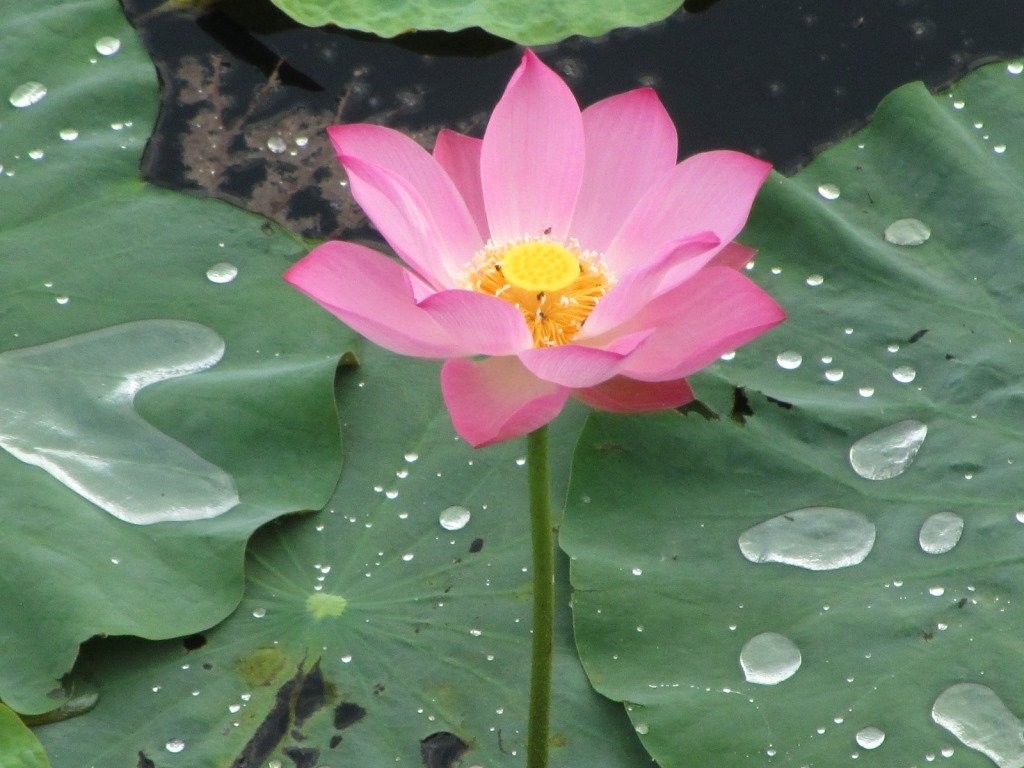 Lotus Flower, Vietnam
Lotus Flower, Vietnam
- Banyan Tree (Cây Đa): Known for their massive size and sprawling roots, banyan trees provide shade and are often considered sacred.
 Banyan Tree, Strangler Fig, Vietnam
Banyan Tree, Strangler Fig, Vietnam
With SIXT.VN, you can embark on countryside tours that take you through lush landscapes and offer opportunities to appreciate these trees and flowers up close.
4. Which Trees Are Most Commonly Seen In The Central Highlands?
The Central Highlands of Vietnam, with its cooler climate and mountainous terrain, is home to specific trees.
- Coffee Bush (Chi Cà Phê): The Central Highlands is known for its coffee plantations. The white blossoms of the coffee bushes are just as beautiful as their beans are flavorful.
 Coffee plant, Vietnam
Coffee plant, Vietnam
-
Yellow Mimosa (Acacia): These trees have distinctive silver-grey leaves and bright yellow flowers. It is a popular choice for hotels, cafes, and parks in Dalat.
-
Orchid Tree: During the dry season, these pink-purple flowers stand out against the blue highland skies, creating a fresh and clean ambiance.
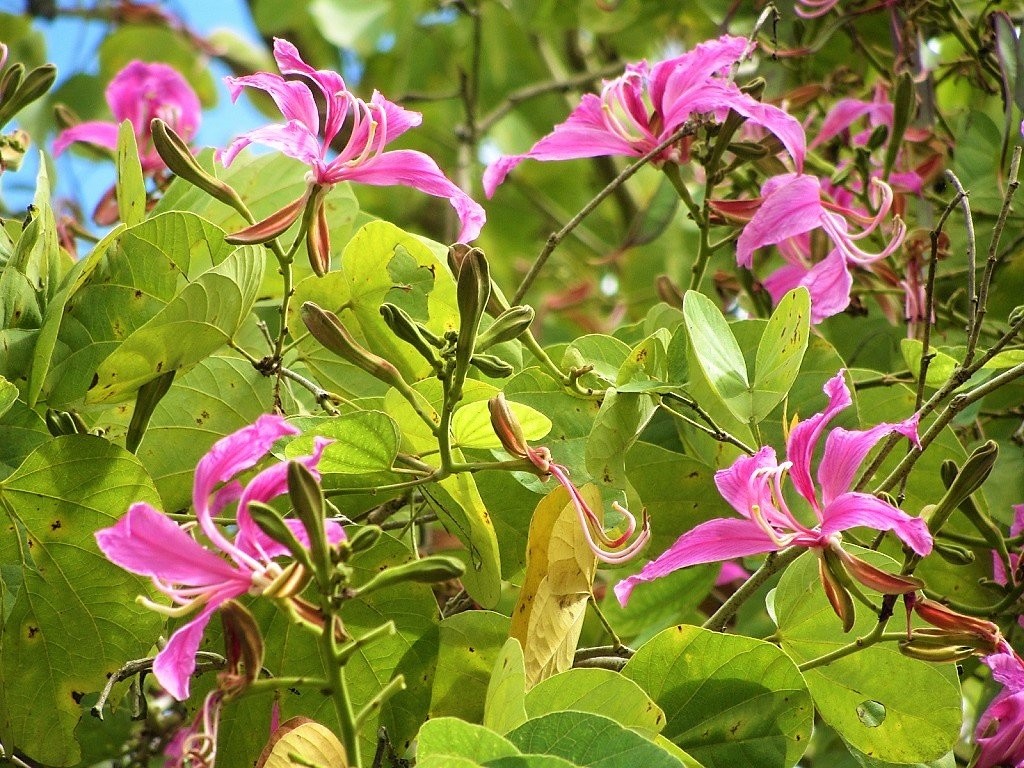 Orchid Tree, Vietnam
Orchid Tree, Vietnam
- Rose Myrtle (Hoa Sim): These dark green bushes produce violet flowers and dark berries, which are used to make a local liquor called rượu sim.
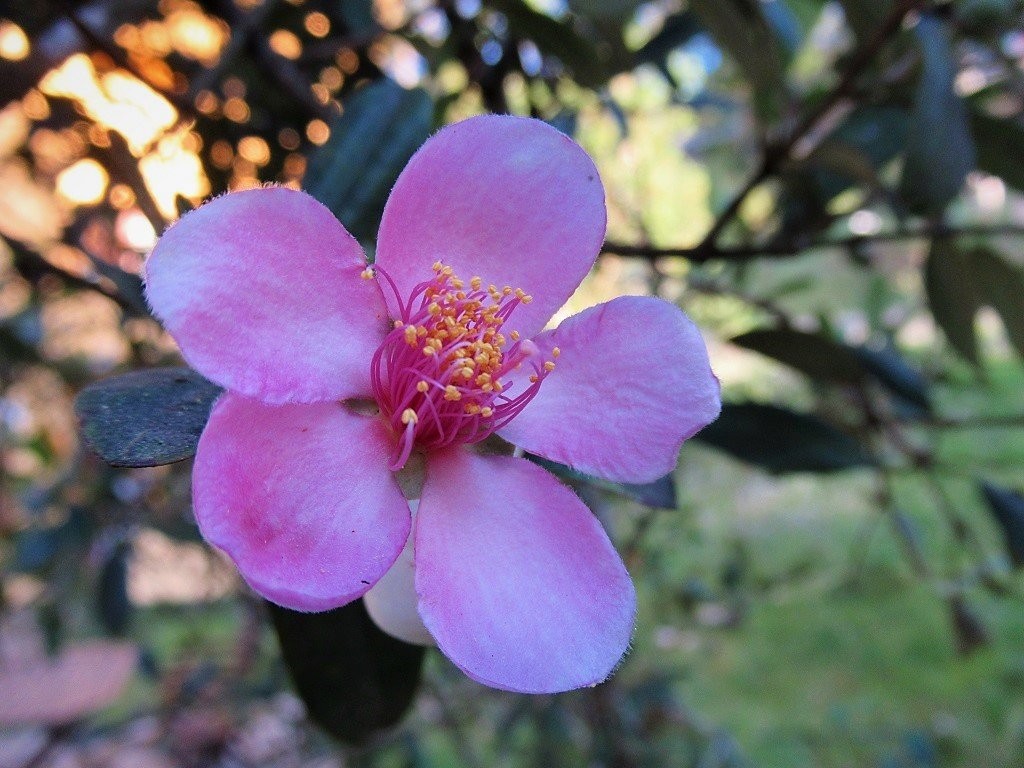 Rose Myrtle Flower, Vietnam
Rose Myrtle Flower, Vietnam
SIXT.VN offers guided tours through the Central Highlands that include visits to coffee plantations and botanical gardens, allowing you to experience the natural beauty of this region firsthand.
5. What Unique Plants Can I Find Along The Vietnamese Coastline?
The coastline of Vietnam has unique flora adapted to the salty air and sandy soil.
- Casuarina Tree (Cây Phi Lao): These pine-like trees are commonly found along the coast, providing shade and helping to prevent erosion.
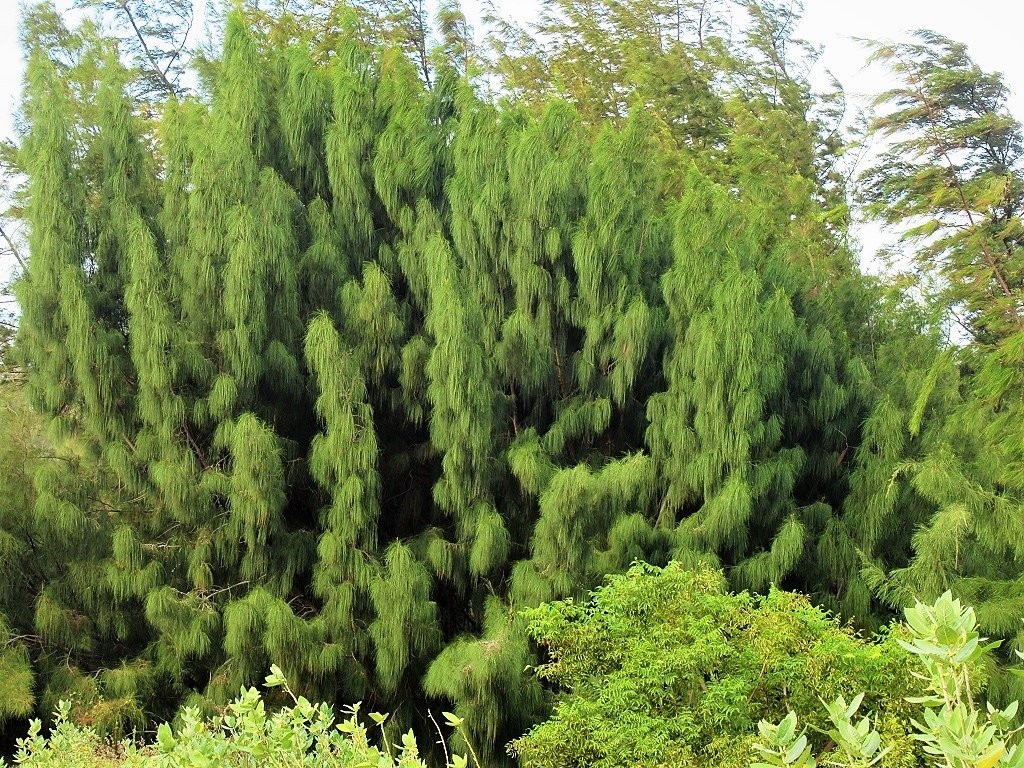 Casuarina Tree, Vietnam
Casuarina Tree, Vietnam
- Madagascar Periwinkle (Dừa Cạn): These dainty flowers grow like weeds along the coastline, thriving in hot, salty, and windy conditions.
 Madagascar Periwinkles, Vietnam
Madagascar Periwinkles, Vietnam
- Tropical Almond Tree (Cây Bàng): Also known as the umbrella tree, these trees provide ample shade and are often found near beaches.
 Tropical almond tree (Umbrella tree), Vietnam
Tropical almond tree (Umbrella tree), Vietnam
- Crown Flower: A distinctive white and violet, star-shaped flower, the Crown Plant is a common sight all along Vietnam’s coastline.
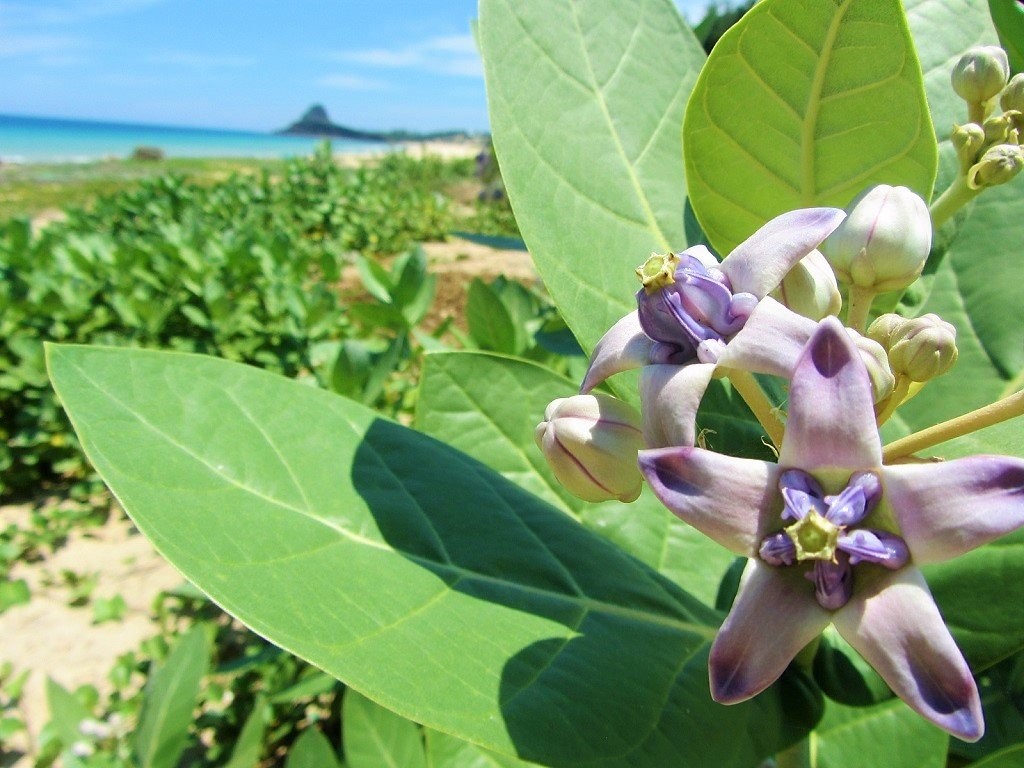 Crown flower, Vietnam
Crown flower, Vietnam
SIXT.VN provides coastal tours that allow you to explore the picturesque beaches and discover these unique plants and trees.
6. How Does The Vietnamese Culture Use Local Flowers And Plants?
Vietnamese culture deeply integrates local flowers and plants into daily life.
-
Lotus: The national flower is used in religious ceremonies, culinary dishes, and traditional medicine. Lotus tea is a popular beverage known for its calming properties.
-
Yellow Mai Flower: These flowers represent prosperity and good fortune and are widely used to decorate homes during Tet (Lunar New Year).
-
Herbs and Vegetables: Many local plants are used in Vietnamese cuisine for their flavor and medicinal properties. Herbs like mint, basil, and cilantro are staples in dishes like pho and spring rolls.
SIXT.VN can arrange cultural tours that offer insights into how flowers and plants are used in Vietnamese traditions, cuisine, and medicine.
7. What Are Some Lesser-Known But Equally Beautiful Vietnamese Flowers?
Beyond the well-known species, Vietnam is home to hidden floral gems.
- Rangoon Creeper (Sử Quân Tử): This vine has a beautiful fragrance. It is often seen growing on walls and fences.
 Rangoon creeper vine, Vietnam
Rangoon creeper vine, Vietnam
- Angel’s Trumpet (Datura): A remarkable flower with a fittingly romantic name, Angel’s Trumpet is a kind of bush from which hang dozens of large, colorful, tubular flowers.
 Angel
Angel
- Spider Lily (Hymenocallis): These decorative lilies have delicate, snow-white flowers with a slight perfume.
 Spider Lily, Vietnam
Spider Lily, Vietnam
- Ixora (Jungle Geranium): Very neat and decorative, Ixora is a bush that I usually see growing in the Central Highlands, either by the side of the road or in gardens.
 Ixora flower, Vietnam
Ixora flower, Vietnam
SIXT.VN offers specialized botanical tours that take you off the beaten path to discover these lesser-known flowers and plants in their natural habitats.
8. Where Can I Find Botanical Gardens In Vietnam?
Vietnam has botanical gardens that showcase the country’s diverse flora.
-
Hanoi Botanical Garden: One of the oldest gardens in Vietnam, it features a wide range of plant species and serene landscapes.
-
Da Lat Flower Garden: Known for its vibrant displays of flowers, this garden is a must-visit in the Central Highlands.
-
Saigon Zoo and Botanical Garden: This historical garden in Ho Chi Minh City features a diverse collection of plants and animals.
SIXT.VN can arrange visits to these botanical gardens, providing transportation and guided tours to enhance your experience.
9. What Factors Threaten Vietnam’s Native Plant Species?
Vietnam’s native plant species face several threats.
-
Deforestation: The conversion of forests for agriculture and development leads to habitat loss.
-
Climate Change: Changing weather patterns and increased temperatures affect the distribution and survival of plant species.
-
Invasive Species: Introduced plant species can outcompete native plants, disrupting ecosystems.
According to a report by the World Wildlife Fund (WWF) in 2021, Vietnam has lost a significant portion of its natural forests in recent decades, impacting biodiversity.
10. What Steps Are Being Taken To Protect Vietnam’s Flora?
Efforts are underway to protect Vietnam’s flora.
-
National Parks and Protected Areas: Establishing and managing protected areas helps conserve natural habitats.
-
Reforestation Programs: Planting native trees helps restore degraded forests and enhance biodiversity.
-
Conservation Education: Raising awareness about the importance of plant conservation encourages sustainable practices.
According to the Vietnam National Administration of Tourism, sustainable tourism initiatives are being implemented to minimize the impact of tourism on the environment.
Explore Vietnam’s Floral Beauty with SIXT.VN
 Flame vine, Vietnam
Flame vine, Vietnam
Ready to discover the diverse flora of Vietnam beyond the flamboyant trees? SIXT.VN is your perfect travel partner. We offer:
- Customized Itineraries: Tailored to your interests, whether you’re a casual traveler or a botany enthusiast.
- Convenient Transportation: From airport transfers to chauffeured services, we make your travel seamless.
- Hotel Bookings: Choose from a wide range of accommodations to suit your budget and preferences.
- Guided Tours: Led by knowledgeable locals who can provide insights into Vietnam’s flora and culture.
Don’t miss the opportunity to explore Vietnam’s enchanting flora. Contact SIXT.VN today to start planning your unforgettable journey.
Address: 260 Cau Giay, Hanoi, Vietnam
Hotline/WhatsApp: +84 986 244 358
Website: SIXT.VN
FAQ About Vietnamese Trees and Flowers
1. Are there any poisonous plants in Vietnam that tourists should be aware of?
Yes, Vietnam has several poisonous plants, including Yellow Oleander and Adenium. It’s important not to ingest any unfamiliar plants.
2. What is the best time of year to see flowers blooming in Vietnam?
The best time to see flowers in bloom varies by region, but generally, the spring months (February to April) offer vibrant displays across the country.
3. Can I take plant seeds or cuttings back to my home country?
Many countries have strict regulations on importing plant material. It’s advisable to check with your home country’s customs and agricultural departments before attempting to bring back seeds or cuttings.
4. Are there any endemic plant species unique to Vietnam?
Yes, Vietnam has many endemic plant species, meaning they are found nowhere else in the world. These are often located in remote mountainous regions and protected areas.
5. How can I participate in eco-tourism activities related to flora in Vietnam?
Many tour operators offer eco-tourism activities such as guided nature walks, visits to community-based eco-lodges, and participation in reforestation projects.
6. What is the significance of the Bodhi tree in Vietnam?
The Bodhi tree is revered in Buddhism as the tree under which Siddhartha Gautama attained enlightenment, and it is commonly found in temple grounds across Vietnam.
7. What is the Vietnamese name for Morning Glory?
The Vietnamese name for Morning Glory is “hoa rau muống”.
8. What fruits found in Vietnam are used for culinary purposes?
Fruits like jackfruit, mango, papaya, and tamarind are commonly used in Vietnamese cuisine for both sweet and savory dishes.
9. How does Vietnamese coffee cultivation impact local biodiversity?
Extensive coffee cultivation can lead to deforestation and habitat loss, particularly in the Central Highlands. Sustainable coffee farming practices are increasingly being promoted to mitigate these impacts.
10. What flowers are commonly associated with Tet (Vietnamese Lunar New Year)?
Yellow Mai flowers are most commonly associated with Tet, symbolizing prosperity and good fortune for the coming year.
Enjoy your floral explorations in Vietnam with SIXT.VN!
Consider exploring these related articles for more in-depth information:
- [Discovering Hanoi’s Hidden Gems](Internal link to Hanoi travel guide)
- [The Best Beaches in Phu Quoc](Internal link to Phu Quoc beach guide)
- [A Culinary Tour of Ho Chi Minh City](Internal link to Ho Chi Minh City food tour)
By integrating these insights and services, SIXT.VN ensures your trip to Vietnam is not only memorable but also deeply connected with the country’s natural and cultural beauty.



